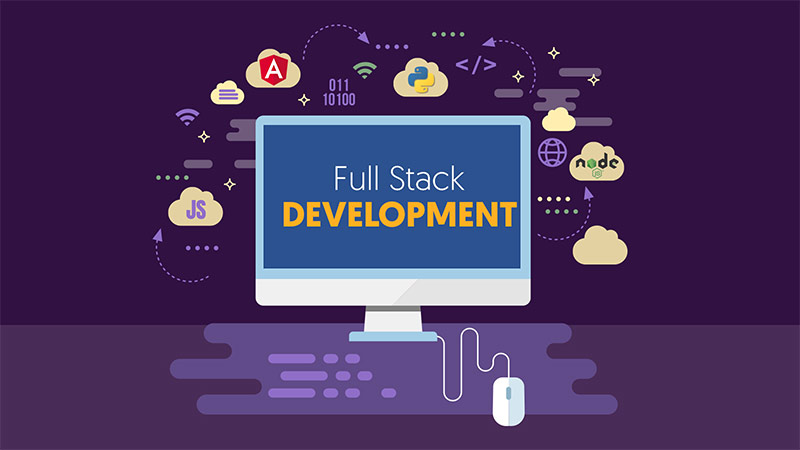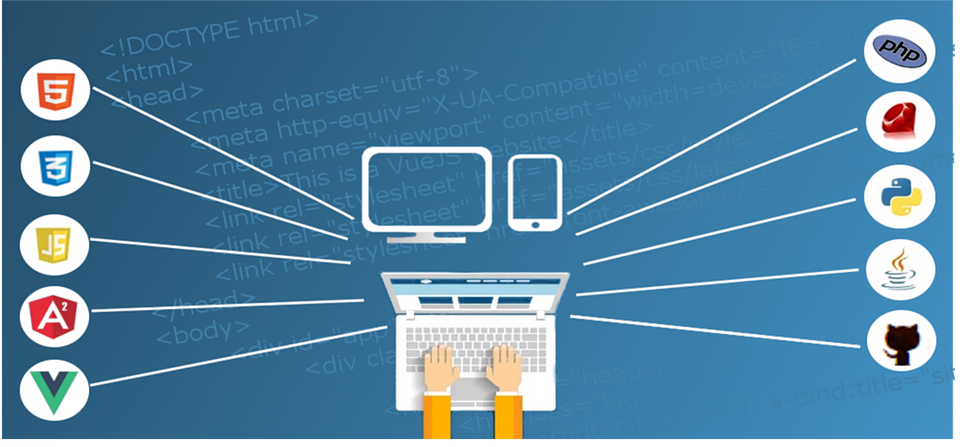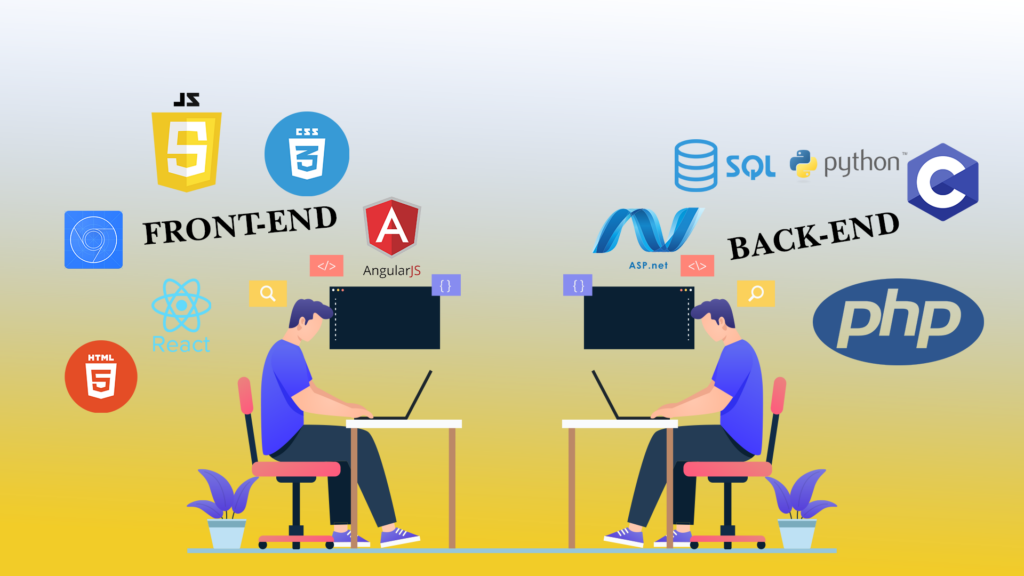Full-Stack Web Development: From HTML to Deployment
Full-Stack Web Development is a dynamic field that equips developers with the ability to create complete, end-to-end web solutions. From designing the user interface to building robust back-end systems and deploying applications, full-stack development offers a holistic approach to modern web development. This guide will take you through the journey, detailing the skills, tools, and technologies you need to master the art of full-stack development.
What is Full-Stack Web Development?
Full-stack web development involves working on all facets of a web application, from its design and user interface to server-side logic and database management. A full-stack developer is essentially a one-person army capable of handling every stage of a web application’s lifecycle.

Key components include:
- Front-End Development: Building the visual and interactive aspects of a website using HTML, CSS, and JavaScript.
- Back-End Development: Managing server-side logic, databases, and application performance.
- DevOps and Deployment: Deploying, maintaining, and scaling applications using cloud platforms and CI/CD pipelines.
Full-stack developers bridge the gap between the client-facing and server-facing components of an application, ensuring seamless functionality.
The Journey: From HTML to Deployment
The process of creating a full-stack application involves several critical stages. Let’s explore each step in detail.
1. Building the Foundation: HTML, CSS, and JavaScript
Every website starts with HTML (HyperText Markup Language), the backbone that defines its structure. CSS (Cascading Style Sheets) brings style and design, making the site visually appealing, while JavaScript adds interactivity and dynamic elements.
Here’s an example of how these work together:
- HTML: Creates the structure (e.g., a navigation bar or form).
- CSS: Adds styling, such as colors, fonts, and layouts.
- JavaScript: Implements interactive features like real-time form validation or animations.
2. Moving to Advanced Front-End Frameworks
Modern web development often requires using frameworks like React, Vue.js, or Angular to create sophisticated and dynamic user interfaces. These frameworks provide reusable components, efficient state management, and a better developer experience.
For instance:
- React: Ideal for building single-page applications (SPAs) with its component-based architecture.
- Vue.js: Known for its simplicity and flexibility.
- Angular: A powerful framework for large-scale, enterprise-level applications.
3. Mastering Back-End Development
The back-end is where the business logic of an application resides. Back-end development involves:
- Writing server-side code using languages like Node.js, Python, or Ruby.
- Managing data with databases such as MySQL, PostgreSQL, or MongoDB.
- Ensuring security through authentication, authorization, and data encryption.
4. Connecting the Dots: APIs and Middleware
APIs (Application Programming Interfaces) act as intermediaries between the front-end and back-end. Developers use REST or GraphQL APIs to handle data communication and improve scalability. Middleware, on the other hand, ensures smooth data flow by processing requests and responses.
5. Emphasizing Version Control and Collaboration
Version control systems like Git are indispensable for tracking changes, collaborating with teams, and managing code efficiently. Platforms like GitHub or GitLab allow developers to share code, review contributions, and maintain version histories.
6. Deployment: Bringing Your Application to the World
Once development is complete, the application needs to be deployed. This involves hosting it on a server, setting up domain names, and configuring security protocols. Popular deployment platforms include:
- AWS (Amazon Web Services): A scalable cloud solution.
- Heroku: Simplifies app deployment with its user-friendly interface.
- Netlify: Great for hosting static websites and front-end applications.
During this stage, tools like Docker and Kubernetes ensure seamless containerization and orchestration, making applications portable and scalable.
Essential Tools for Full-Stack Development
Mastering full-stack development requires familiarity with a range of tools and technologies:

Front-End Tools
- HTML5: For creating modern, semantic web structures.
- CSS Frameworks: Bootstrap, Tailwind CSS for responsive designs.
- JavaScript Frameworks: React, Angular, Vue.js.
Back-End Tools
- Languages: Node.js, Python, Ruby.
- Frameworks: Express.js, Django, Flask.
- Databases: MySQL, MongoDB, PostgreSQL.
Version Control
- Git: To track changes and collaborate on code.
- GitHub/GitLab: For code repository management.
DevOps and Deployment
- Docker: To create containerized applications.
- Kubernetes: For scaling and managing containers.
- CI/CD Tools: Jenkins, GitHub Actions for automated testing and deployment.
Benefits of Full-Stack Web Development
- Versatility: Full-stack developers can handle both front-end and back-end tasks, making them invaluable to teams.
- Cost Efficiency: Companies often prefer full-stack developers over hiring separate front-end and back-end specialists.
- Problem-Solving Skills: By understanding the entire stack, developers can troubleshoot and resolve issues faster.
Challenges in Full-Stack Web Development

- Rapidly Changing Technology: Staying up-to-date with new tools and frameworks can be challenging.
- Broad Skillset Requirements: Mastering both front-end and back-end technologies demands significant time and effort.
- Debugging Complexity: Resolving bugs that involve both ends of the stack can be time-consuming.
Career Opportunities in Full-Stack Development
With companies increasingly adopting agile methodologies and seeking versatile professionals, the demand for full-stack developers has skyrocketed. Popular roles include:

- Full-Stack Engineer
- Front-End Developer transitioning to Full-Stack
- Back-End Developer expanding into Full-Stack
Conclusion
Full-Stack Web Development, from HTML to deployment, is more than just a skill—it’s a journey that combines creativity, technical expertise, and problem-solving. Whether you’re a beginner starting with basic web pages or an experienced developer looking to expand your skill set, full-stack development offers endless opportunities to innovate and grow.
By mastering this field, you can take an idea and turn it into a fully functional, scalable, and user-friendly web application. Start your journey today and unlock the potential of full-stack web development.
Meta Description:
Full-Stack Web Development: Master the journey from HTML to deployment. Learn the tools, technologies, and skills needed to build scalable web applications.



